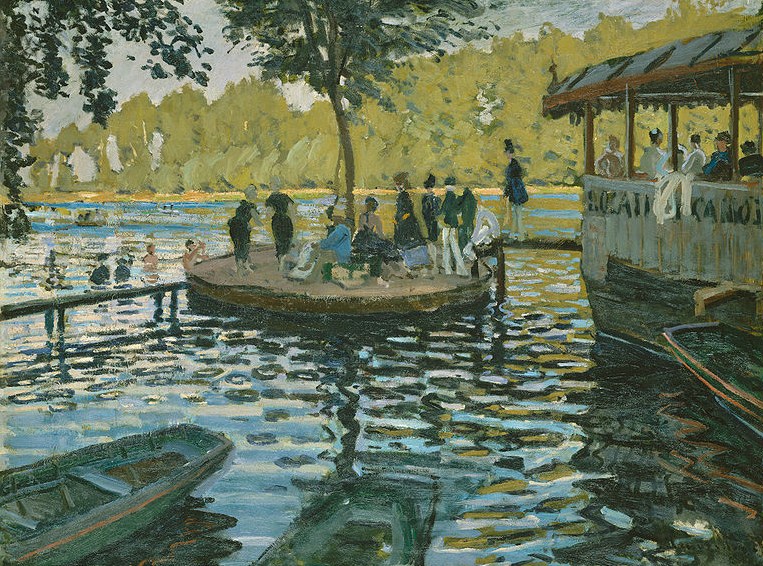From masterpieces by the Italian Renaissance painter Giovanni Battista Moroni to French Impressionist Gustave Caillebotte, our Gallery Manager Rosie picks a selection of her favourite paintings:
 |
| Jan Van Eyck, 'The Arnolfini Portrait', 1434 © The National Gallery, London |
This iconic double portrait depicts Giovannni di Nicolao Arnolfini, a member of a merchant family from Lucca and his wife in a luxurious interior. It has been suggested that Giovanni's wife is pregnant, although her full-skirted dress conforms to contemporary fashion. Van Eyck has playfully inscribed the painting with an ornate Latin signature that reads 'Jan Van Eyck was here 1434.'
 |
| Peter Paul Rubens, 'A Lion Hunt'. 1614-15 © The National Gallery, London |
This violent grisaille sketch takes visual inspiration from Leonardo Da Vinci's fresco of 'The Battle of Anghiari', which was destroyed in 1557. Eastern hunters on horseback attempt to fight off a lion who attemots to drag one of them to the ground. Another figure is shown killing a lion and there is a corpse beneath the horses.
 |
| Rembrandt van Rijn, 'Recumbent Lion facing Right', 1660-65 © Rijksmuseum, Amsterdam
Rembrandt favoured drawing what he saw around him, unlike other artists who relied on paintings by predecessors. At the age of 46, Rembrandt saw a real lion in Amsterdam, which he sketched directly, capturing its powerful anatomy with impressive accuracy.
|
 |
| John Constable, 'The Hay Wain', 1821 © The National Gallery, London |
This famous painting was first exhibited at the Royal Academy in 1821, but failed to attract a buyer. However, when it was shown in France, Constable was awarded a Gold medal by Charles X. The painting depicts a horse-drawn cart in the foreground, a cottage rented by farmer Willy Lott on the left and in the distance, a meadow with a group of haymakers at work. This was one of the many en plein air sketches that Constable created of the traditional Suffolk countryside, which he then used to make full-size preparatory oil sketches back in his studio in London.
 |
| Gustav Caillebotte, 'The Floor Scrapers', 1875 © Musee D'Orsay, Paris |
This realist painting was revolutionary in subject as it was one of the first representations of the urban proletariat. City workers had been rarely painted in comparison to peasants or countryfolk depicted by artists such as Millet or Courbet. Caillebotte was academically trained under Bonnat, which is evident in the high viewpoint, alignment of the floorboards and nude torsos. In 1875, the painting was rejected by the Jury at the Salon, who were shocked by its 'vulgar subject matter.' Caillebotte used his academic training in order to explore the contemporary world in a groundbreaking way.












